Timothy M Pickett
age ~58
from Salt Lake City, UT
- Also known as:
-
- Timothy Michael Pickett
- Timothy W Pickett
- Tim M Pickett
- Timm Pickett
- Phone and address:
-
225 W 700 N, Salt Lake City, UT 84103
8014872856
Timothy Pickett Phones & Addresses
- 225 W 700 N, Salt Lake Cty, UT 84103 • 8014872856 • 8012329206
- Salt Lake City, UT
- Lodi, CA
- Sandpoint, ID
- Reno, NV
Specialities
Business
Us Patents
-
Apparatus And Method For Treating Fgd Blowdown Or Similar Liquids
view source -
US Patent:7790034, Sep 7, 2010
-
Filed:Jul 24, 2006
-
Appl. No.:11/996384
-
Inventors:Jeffrey Gerard Peeters - Toronto, CA
William A. Bonkoski - Wilmington DE, US
Pierre Lucien Cote - Dundas, CA
Hidayat Husain - Oakville, CA
Timothy Michael Pickett - Salt Lake City UT, US -
Assignee:Zenon Technology Partnership - Wilmington DE
-
International Classification:C02F 3/30
-
US Classification:210615, 210617, 210630, 210631, 210150, 210914
-
Abstract:A process has steps of one or more of aerobic treatment to remove COD and nitrify a waste stream, anoxic treatment to denitrify a waste stream, anoxic treatment to remove selenium and anaerobic treatment to remove heavy metals and sulphur. The process may be used to treat, for example, FGD blow down water. The process may further include one or more of (a) membrane separation of the waste stream upstream of the anoxic digestion to remove selenium, (b) dilution upstream of the biological treatment step, (c) physical/chemical pretreatment upstream of the biological processes or dilution step to remove TSS and soften the waste stream, or (d) ammonia stripping upstream of the biological treatment steps or dilutions step. These processes may be provided in a variety of suspended growth or fixed film reactors, for example a membrane bioreactor or a fixed film reactor having a GAC bed. Processes for biological treatment of inorganic compounds in a fixed medium reactor is described including steps of one or more of maintaining desired ORP levels, optionally by controlling nutrient addition, and removing solids or gas bubbles from the medium bed.
-
Apparatus And Method For Treating Fgd Blowdown Or Similar Liquids
view source -
US Patent:8163181, Apr 24, 2012
-
Filed:Aug 13, 2010
-
Appl. No.:12/856030
-
Inventors:Jeffrey Gerard Peeters - Toronto, CA
William A. Bonkoski - Conshohocken PA, US
Pierre Lucien Cote - Dundas, CA
Hidayat Husain - Oakville, CA
Timothy Michael Pickett - Salt Lake City UT, US -
Assignee:Zenon Technology Partnership - Wilmington DE
-
International Classification:C02F 3/04
-
US Classification:210615, 210150
-
Abstract:A process has steps of one or more of aerobic treatment to remove COD and nitrify a waste stream, anoxic treatment to denitrify a waste stream, anoxic treatment to remove selenium and anaerobic treatment to remove heavy metals and sulphur. The process may be used to treat, for example, FGD blow down water. The process may further include one or more of (a) membrane separation of the waste stream upstream of the anoxic digestion to remove selenium, (b) dilution upstream of the biological treatment step, (c) physical/chemical pretreatment upstream of the biological processes or dilution step to remove TSS and soften the waste stream, or (d) ammonia stripping upstream of the biological treatment steps or dilutions step. These processes may be provided in a variety of suspended growth or fixed film reactors, for example a membrane bioreactor or a fixed film reactor having a GAC bed. Processes for biological treatment of inorganic compounds in a fixed medium reactor is described including steps of one or more of maintaining desired ORP levels, optionally by controlling nutrient addition, and removing solids or gas bubbles from the medium bed.
-
Gasification Grey Water Treatment Systems
view source -
US Patent:8557118, Oct 15, 2013
-
Filed:Feb 2, 2010
-
Appl. No.:12/699004
-
Inventors:James Scott Kain - Houston TX, US
David Brian Fraser - Burlington, CA
Timothy Michael Pickett - Salt Lake City UT, US -
Assignee:General Electric Company - Schenectady NY
-
International Classification:C02F 1/70
-
US Classification:210616, 210631, 210719, 210721, 210757, 210202, 210205
-
Abstract:In one embodiment, a grey water treatment system includes an oxidation reactor for oxidizing grey water. The grey water treatment system also includes a biological reduction and precipitation system with microbes designed to remove one or more target components from the oxidized grey water.
-
Selenium Removal Using Chemical Oxidation And Biological Reduction
view source -
US Patent:20120024798, Feb 2, 2012
-
Filed:Jul 27, 2010
-
Appl. No.:12/844053
-
Inventors:Timothy Michael PICKETT - Salt Lake City UT, US
Yanguo Ma - Salt Lake City UT, US
Jill Sonstegard - Layton UT, US -
International Classification:C02F 9/04
C02F 3/00
C02F 1/70
C02F 1/72
C02F 1/58 -
US Classification:210719, 210205
-
Abstract:Selenium in the form of a reduced species such as selenocyanate is oxidized to produce an oxidized selenium species such as selenate or selenite, and then a biological reduction process is used to remove selenium from the oxidized selenium species. In an example, a chemical oxidant is added to a wastewater containing selenocyanate to produce selenate and selenite. The partially treated wastewater is then fed to a reactor containing a fixed media supporting a biofilm with selenium reducing organisms. The selenium in the selenate and selenite is reduced to an insoluble form of selenium, such as elemental selenium, which precipitates from the wastewater.
-
Selenium Separation And Recovery From Bioreactor Sludge
view source -
US Patent:20120152761, Jun 21, 2012
-
Filed:Dec 17, 2010
-
Appl. No.:12/971585
-
Inventors:Timothy Michael Pickett - Salt Lake City UT, US
Jill Noreen Sonstegard - Layton UT, US -
International Classification:C01B 19/00
C02F 1/70
C02F 1/461
C02F 1/52
C02F 11/00
C02F 1/68
C02F 1/72 -
US Classification:205751, 210767, 210696, 210787, 210806, 210773, 210719
-
Abstract:Wastewater containing soluble selenium is treated in a bioreactor. Microorganisms in the reactor reduce the selenium to elemental selenium, which is insoluble. The elemental selenium is discharged from the reactor in waste sludge. The sludge is treated to recover selenium. In one method, the sludge is washed with chemicals, for example surfactants, and agitated to disrupt the adhesion of the selenium particles to the cells. The selenium particles are then separated from the cells using a physical separation process such as a centrifuge or differential filtration. In another method, the sludge is de-watered or dried to a very high solids content. The selenium particles are dissolved using an oxidizer under high pH conditions. A solids fraction is removed from the resulting slurry. A resulting selenium brine is further refined to recover the selenium.
-
Method Of Selenium Removal
view source -
US Patent:61836443, Feb 6, 2001
-
Filed:Feb 11, 2000
-
Appl. No.:9/503135
-
Inventors:D. Jack Adams - Park City UT
Timothy M. Pickett - Salt Lake City UT -
Assignee:Weber State University - Ogden UT
-
International Classification:C02F 300
C02F 334 -
US Classification:210611
-
Abstract:Dissolved selenium is removed from contaminated water by treating the water in a reactor containing selected endemic and other selenium reducing organisms. Microbes may be isolated from the specific water or imported from other selenium contaminated water, The microbes are then screened for ability to reduce selenium under the site specific environmental conditions. The selected microbes are optimized for selenium reduction, then established in a high density biofilm within a reactor. The selenium contaminated water is passed through the reactor with optimized nutrient mix added as needed. The elemental selenium is precipitated and removed from the water.
-
Fail Safe Flushing Bioreactor For Selenium Water Treatment
view source -
US Patent:20220242763, Aug 4, 2022
-
Filed:Apr 13, 2022
-
Appl. No.:17/719911
-
Inventors:- San Diego CA, US
Timothy Michael Pickett - Salt Lake City UT, US -
Assignee:Frontier Water Systems, LLC - San Diego CA
-
International Classification:C02F 3/28
B01D 61/14
B01D 61/02
B01D 61/04
C02F 9/00
C02F 3/30
B01D 61/58
C02F 3/00
B01D 61/16 -
Abstract:A biological reactor system treats concentrated contaminated water with a combination of upflow and downflow bioreactors that are downstream from a reverse osmosis or other concentrator. The system may have a fail safe configuration where flush water may be introduced to the reactors in the event of a power failure or when taking the reactors offline. Many reverse osmosis systems introduce antiscalant treatments upstream so that the reverse osmosis filters do not scale. However, such treatments result in superconcentrated conditions of the antiscalants in the contaminated water processed by the bioreactors. A flushing system may deconcentrate the bioreactors to prevent the antiscalants from precipitating and fouling the bioreactors.
-
Fail Safe Flushing Bioreactor For Selenium Water Treatment
view source -
US Patent:20210061690, Mar 4, 2021
-
Filed:Apr 4, 2020
-
Appl. No.:16/840383
-
Inventors:- San Diego CA, US
Timothy Michael Pickett - Salt Lake City UT, US -
Assignee:Frontier Water Systems, LLC - San Diego CA
-
International Classification:C02F 3/28
B01D 61/14
B01D 61/02
B01D 61/04
C02F 9/00
C02F 3/30
B01D 61/58
C02F 3/00
B01D 61/16 -
Abstract:A biological reactor system treats concentrated contaminated water with a combination of upflow and downflow bioreactors that are downstream from a reverse osmosis or other concentrator. The system may have a fail safe configuration where flush water may be introduced to the reactors in the event of a power failure or when taking the reactors offline. Many reverse osmosis systems introduce antiscalant treatments upstream so that the reverse osmosis filters do not scale. However, such treatments result in superconcentrated conditions of the antiscalants in the contaminated water processed by the bioreactors. A flushing system may deconcentrate the bioreactors to prevent the antiscalants from precipitating and fouling the bioreactors.
Name / Title
Company / Classification
Phones & Addresses
Principal
Tim Pickett LLC
Business Services at Non-Commercial Site
Business Services at Non-Commercial Site
208 S 300 E, Bountiful, UT 84010
Resumes

Founder
view sourceLocation:
Salt Lake City, UT
Industry:
Hospital & Health Care
Work:
Utah Marijuana Org
Founder
Steward Health Care
Physician Assistant
Founder
Steward Health Care
Physician Assistant
Education:
University of Utah School of Medicine 2020 - 2020
Master of Science, Masters University of Utah School of Medicine 2011 - 2014
Master of Science, Masters University of Utah School of Medicine 2012 - 2014
Master of Science, Masters
Master of Science, Masters University of Utah School of Medicine 2011 - 2014
Master of Science, Masters University of Utah School of Medicine 2012 - 2014
Master of Science, Masters
Skills:
Emergency Medicine
Bls
Acls
Medicine
Family Medicine
Pediatrics
Internal Medicine
Emr
Medical Education
Surgery
Healthcare
Public Health
Hospitals
Cpr Certified
Ekg
Bls
Acls
Medicine
Family Medicine
Pediatrics
Internal Medicine
Emr
Medical Education
Surgery
Healthcare
Public Health
Hospitals
Cpr Certified
Ekg

Director Of Operations
view sourceLocation:
30 north East Pl east, Salt Lake City, UT 84102
Industry:
Higher Education
Work:
Shive-Hattery, Inc. since Apr 2008
Mechanical Engineer EIT
NGI Apr 2007 - Apr 2008
Mechanical Engineer
BYU Capstone Sep 2006 - Apr 2007
Capstone Team Leader
Brigham Young University Jul 2005 - Apr 2007
Biomedical Research Assistant
Northwest Orthotics and Prosthetics Apr 2005 - Mar 2006
Prosthetic Technician
Mechanical Engineer EIT
NGI Apr 2007 - Apr 2008
Mechanical Engineer
BYU Capstone Sep 2006 - Apr 2007
Capstone Team Leader
Brigham Young University Jul 2005 - Apr 2007
Biomedical Research Assistant
Northwest Orthotics and Prosthetics Apr 2005 - Mar 2006
Prosthetic Technician
Education:
Brigham Young University 2003 - 2007
BS, Mechanical Engineering
BS, Mechanical Engineering
Skills:
Mechanical Engineering
Cad
Engineering
Design of Experiments
R&D
Heat Transfer
Prototype Development
Ideation and Brainstorming
Testing
Solidworks
Instrumentation
Cnc Operation
3D Printing
Fluid Mechanics
Ergonomics and Human Factors
Intellectual Property
Thermodynamics
Machining
Product Development
Design For Manufacturing
Iso 13485
Fda Qsr
Ethnographic Research
Microsoft Excel
Project Management
Camworks
Cad
Engineering
Design of Experiments
R&D
Heat Transfer
Prototype Development
Ideation and Brainstorming
Testing
Solidworks
Instrumentation
Cnc Operation
3D Printing
Fluid Mechanics
Ergonomics and Human Factors
Intellectual Property
Thermodynamics
Machining
Product Development
Design For Manufacturing
Iso 13485
Fda Qsr
Ethnographic Research
Microsoft Excel
Project Management
Camworks
Languages:
Spanish
Portuguese
English
Portuguese
English
Certifications:
License 8346338
Ncees and State of Utah, License 8346338
Professional Engineer
Iso 13485:2016 Lead Auditor
Certified Solidworks Associate (Cswa)
Ncees and State of Utah, License 8346338
Professional Engineer
Iso 13485:2016 Lead Auditor
Certified Solidworks Associate (Cswa)

Timothy Pickett
view source
Timothy Pickett
view source
Timothy Pickett
view source
Timothy Pickett
view source
Timothy Pickett
view source
Director Of Technology At Arvco Container Corporation
view sourceLocation:
Kalamazoo, Michigan
Industry:
Information Technology and Services
Education:
Western Michigan University - Haworth College of Business 2005 - 2011
Bachelor's of Business Administration, Computer Information Systems
Bachelor's of Business Administration, Computer Information Systems
Skills:
VMware Infrastructure
Windows Server 2003
Windows Server 2008
Cisco Switches
Watchguard firewalls
Windows 7
Windows XP Professional
Mac OS X
Dell PowerEdge Servers
Dell OpenManage
HP Proliant
Mitel
VoIP
Manufacturing
Management
Unix
Wireless Networking
Fortinet Firewalls
Cisco Routers
iPhone
iPad
WAN
LAN
Windows Server
Windows Server 2003
Windows Server 2008
Cisco Switches
Watchguard firewalls
Windows 7
Windows XP Professional
Mac OS X
Dell PowerEdge Servers
Dell OpenManage
HP Proliant
Mitel
VoIP
Manufacturing
Management
Unix
Wireless Networking
Fortinet Firewalls
Cisco Routers
iPhone
iPad
WAN
LAN
Windows Server
Languages:
French
Lawyers & Attorneys

Timothy Pickett - Lawyer
view sourceSpecialties:
Business
ISLN:
1000347166
Admitted:
2016
University:
University of San Diego School of Law, San Diego CA
Googleplus
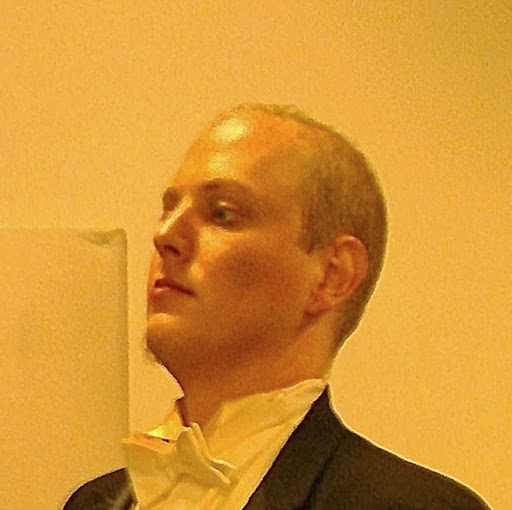
Timothy Pickett
Tagline:
I'm So Meta, Every Tagline Acronymn

Timothy Pickett

Timothy Pickett

Timothy Pickett

Timothy Pickett

Timothy Pickett

Timothy Pickett

Timothy Pickett
Education:
Western Michigan University - Computer Information Systems
Youtube
Myspace
Flickr
Classmates

Timothy Pickett
view sourceSchools:
Bryan County High School Pembroke GA 1994-1998
Community:
John Warner, Jennifer Coursey, Linda Williams, Natalie Huber

Timothy Pickett
view sourceSchools:
Bowling Green High School Bowling Green VA 1999-2003
Community:
Edmond Noel, James Alexander

Tim Pickett, Northfork Hi...
view source
Tim Pickett, Warsaw High ...
view source
Serra Catholic High Schoo...
view sourceGraduates:
Tim Pickett (1963-1967),
Terrence Grant (1955-1959),
Susan MacDonald (1968-1969),
David Snook (1962-1966)
Terrence Grant (1955-1959),
Susan MacDonald (1968-1969),
David Snook (1962-1966)

Bryan County High School,...
view sourceGraduates:
Timothy Moore (1988-1992),
Emily Pickett (1964-1968),
Timothy Pickett (1994-1998),
Queenester David (2003-2007)
Emily Pickett (1964-1968),
Timothy Pickett (1994-1998),
Queenester David (2003-2007)

King Upper Grade Center, ...
view sourceGraduates:
Tim Pickett (1976-1980),
Matthew Gubbins (1973-1976),
Tim Powell (1973-1975)
Matthew Gubbins (1973-1976),
Tim Powell (1973-1975)
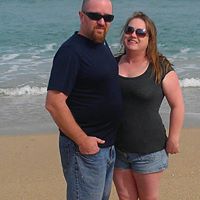
Tim Pickett
view source
Timothy Pickett
view source
Timothy Pickett
view source
Timothy Pickett
view source
Andrew Timothy Pickett
view source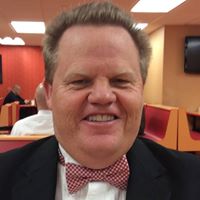
Timothy Pickett
view source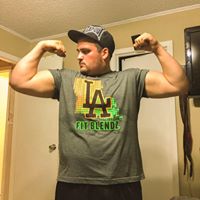
Timothy Ryan Pickett
view source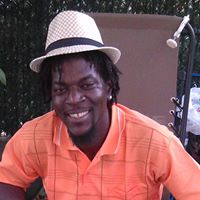
Timothy Pickett
view sourceGet Report for Timothy M Pickett from Salt Lake City, UT, age ~58














